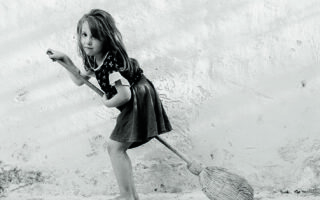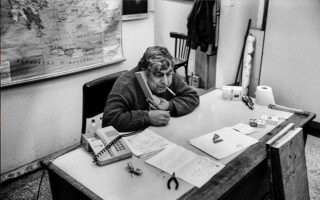Images of a Kafkaesque Prague

In 1985, Constantinos Pittas, then in his late 20s, embarked on a five-year journey across Cold War Europe in a now-iconic Greek-made NAMCO Pony car. Armed with a Minox 35mm compact camera, he zigzagged across the divided continent, capturing candid black-and-white portraits of ordinary people in an effort to create the archetypal European portrait. His idealistic and unknowingly introspective project came to an abrupt halt four years later as the Berlin Wall crumbled into souvenirs, leaving behind an archive of approximately 30,000 unseen photographs that remained buried for 25 years.
Currently, just over 30 photos from his travels to Prague under communist rule are on display in an exhibition titled “Kafka’s Prague,” at the Melina Cultural Center in Thiseio, downtown Athens.
Pittas, heavily influenced by the nightmarish stories of Prague-born Franz Kafka, first visited the city in 1986, seeking traces of the writer’s literary universe.
“I was searching for Kafka throughout the city. I had written down the addresses mentioned in his ‘Diaries’ in a small notebook and spent hours trying to locate them while wandering the streets. I came across gray, neglected buildings, while others had vanished entirely. Not a single sign, an old inscription – nothing. The only trace I found was a small plaque outside the house where he was born, in Josefov. His books were not available in bookstores either,” Pittas recalls.
Nevertheless, Prague was still enveloped in the dystopian aura of Kafka’s writings. With his tiny camera, Pittas captured the eerie mood of a city burdened by isolation, repression and silence.
“In 1986, Kafka was nowhere to be found in Prague. However, the atmosphere of his books remained, imprinted everywhere you looked,” the photographer says.

The pictures convey both the physical and emotional landscapes of what is now the vibrant capital of the Czech Republic, just before the fall of the communist regime.
“You could feel the heavy atmosphere of a closed society; you could see the confinement in people’s eyes. I can’t forget those gazes, those wet and anxious eyes. The fear people had of speaking to you on the street,” Pittas says.
The Velvet Revolution, a nationwide protest movement in Czechoslovakia during November and December 1989, ended more than 40 years of communist rule in the country.
“Today, Prague is a completely different city from what I saw back then. A different world.”
The photo exhibition, held alongside a showcase of engravings and graphic design, is organized by the Czech Center Athens to commemorate the centenary of Kafka’s death.
The exhibition runs until October 31 at the Melina Cultural Center in Thiseio (66 Iraklidon). Opening hours are Tuesdays to Fridays, 11 a.m. to 7 p.m., and weekends, 10 a.m. to 3 p.m. Admission is free, with guided tours available on October 19-20 and 26-27 at 12 p.m.





